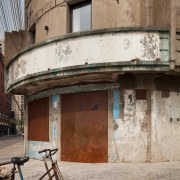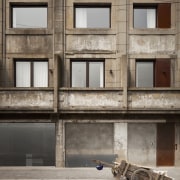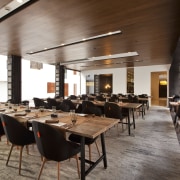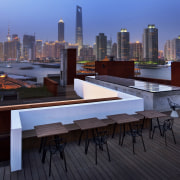Inside out
A converted Japanese Army headquarters in Shanghai is transformed into a hotel that challenges the notion of private and public spaces
With any significant restoration project, retaining an element of the old style is just as crucial as the new architecture introduced. For this boutique hotel in Shanghai, referencing the history of the site was the key consideration.
The Waterhouse at South Bund sits on the Huangpu river in Shanghai. Originally a Japanese Army headquarters dating from the 1930s, the old buildings were most recently used as a warehouse to store imported goods coming in from the docks.
Lyndon Neri and Rosanna Hu from Neri&Hu Design and Research Office were commissioned to turn the three existing buildings into a four-storey, 19-room boutique hotel, creating a significant destination that would convey the spirit and essence of modern Shanghai. The designers were interested in exploring three concepts an abstract interpretation of long-tangs, a local style of terrace housing; the blurring of public and private spaces; and the contrast between the existing building and the new addition.
"We are very much inspired by the everyday, the mundane and the ordinary the fabric of the city of Shanghai, its people and activities. We wanted to create something entirely different from the modern buildings so often seen here," says Neri.
Neri says that to create a seamless design, the designers had to combine three separate buildings with multiple levels.
"The key was to ensure that all three buildings look into the central courtyard, which brings light into the spaces," he says.
As part of the renovation, the designers also added a new level to the three-storey buildings, creating a rooftop terrace bar featuring Cor-Ten steel, to reflect the industrial nature of this docklands area. The terrace allows guests to enjoy expansive views of the Pudong skyline.
Neri says that as an extension of the long-tang aesthetic, he wanted hotel guests to be confronted with the local Shanghai urban condition.
"In long-tangs, visual corridors are created where private spaces become public," he says. "As housing in Shanghai is traditionally small, domestic activities are pushed onto the street, creating a communal feel to everyday life.
"In the hotel, we wanted to achieve a blurring of the internal and external spaces too. The public spaces allow glimpses into private rooms, while the private spaces peek into public areas."
Story by: Trendsideas
Home kitchen bathroom commercial design
















